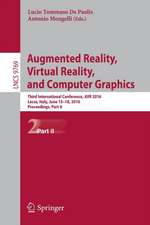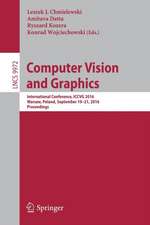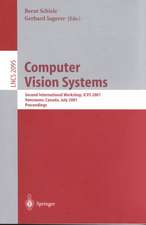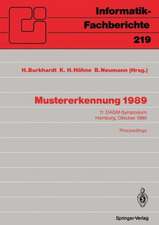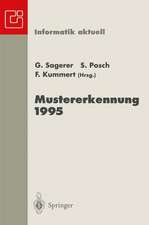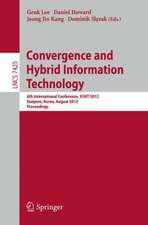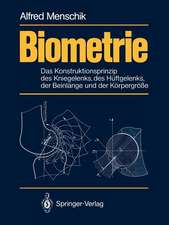Semantic Networks for Understanding Scenes: Advances in Computer Vision and Machine Intelligence
Autor Gerhard Sagerer, Heinrich Niemannen Limba Engleză Hardback – 30 sep 1997
| Toate formatele și edițiile | Preț | Express |
|---|---|---|
| Paperback (1) | 996.56 lei 6-8 săpt. | |
| Springer Us – 12 iun 2013 | 996.56 lei 6-8 săpt. | |
| Hardback (1) | 1005.46 lei 6-8 săpt. | |
| Springer Us – 30 sep 1997 | 1005.46 lei 6-8 săpt. |
Preț: 1005.46 lei
Preț vechi: 1256.83 lei
-20% Nou
Puncte Express: 1508
Preț estimativ în valută:
192.46€ • 209.12$ • 161.77£
192.46€ • 209.12$ • 161.77£
Carte tipărită la comandă
Livrare economică 21 aprilie-05 mai
Preluare comenzi: 021 569.72.76
Specificații
ISBN-13: 9780306457043
ISBN-10: 0306457040
Pagini: 500
Ilustrații: XI, 500 p.
Dimensiuni: 155 x 235 x 33 mm
Greutate: 0.93 kg
Ediția:1997
Editura: Springer Us
Colecția Springer
Seria Advances in Computer Vision and Machine Intelligence
Locul publicării:New York, NY, United States
ISBN-10: 0306457040
Pagini: 500
Ilustrații: XI, 500 p.
Dimensiuni: 155 x 235 x 33 mm
Greutate: 0.93 kg
Ediția:1997
Editura: Springer Us
Colecția Springer
Seria Advances in Computer Vision and Machine Intelligence
Locul publicării:New York, NY, United States
Public țintă
ResearchCuprins
1 Introduction.- 2 Segmentation.- 3 Knowledge Representation.- 4 A Knowledge Representation Language.- 5 Judgment.- 6 Control.- 7 Acquisition of Knowledge.- 8 Explanation and user Interface.- 9 Applications.- References.













